Olfaction occurs when volatile compounds bind to specific odorant receptors. In mammals, each olfactory receptor neuron in
Question:
a. In order to examine the expression pattern of different T AARs in the olfactory nasal epithelium, researchers localized T AAR RNA by in situ hybridization in pairwise combinations. All possible pairwise combinations of the 15 mouse T AARs were examined. A typical example of the results obtained is shown in the top set of panels in the figure below, in which T AAR6 and TAAR 7 have been localized with fluorescent probes in mouse nasal epithelium. The T AAR6 probe was labeled with a green fluor, the TAAR7 probe with a red fluor. The lower set of panels shows localization of mouse odorant receptor 28 (MOR28; green), a classical odorant receptor, and TAAR6 (red). Each stained parch in the images is the staining pattern of an individual olfactory neuron. The "merge" panels show the two other images superimposed. What do these data suggest about expression patterns of the T AARs?
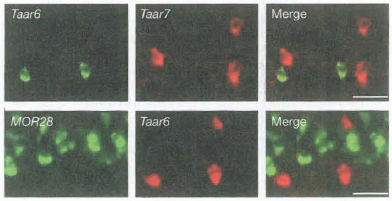
b. A number of cell lines that produce neither classical odorant receptors nor TAARs have each been transfected with the gene encoding a different TAAR. The cells have also been cotransfected with a gene encoding secreted alkaline phosphatase (SEAP) under control of a cAMP-responsive element. The cells were then exposed to various amines, as shown in the following figure, and SEAP activity in the medium was determined. The figure shows data for some representative TAARs (m = mouse, h = human). What do these data reveal about TAARs? What does the SEAP activity assay reveal about the signaling pathway utilized by chemoreception involving T AARs?
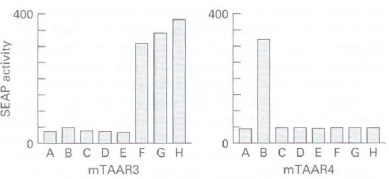
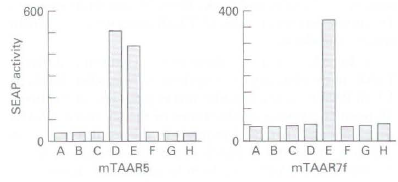
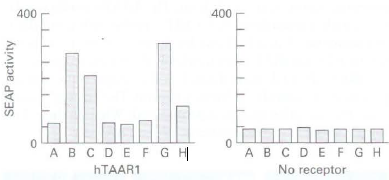
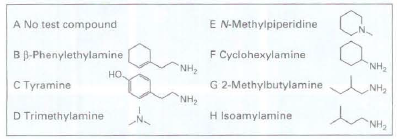
c. In a third set of studies, SEAP activity was measured in cells expressing mouse TAAR5 (mTAAR5) following exposure of the cells to diluted urine derived from two strains of mice or from humans, as indicated on the graphs in the next column. Mice reach puberty at about one month of age. What do these data suggest may be a biological function for the T AA R5 neurons in mice? What additional studies would you conduct to support your hypothesis?
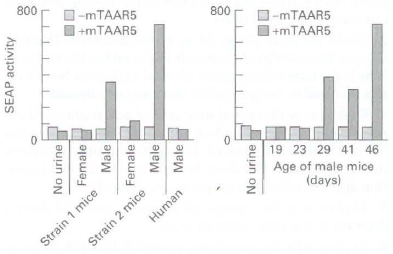
Step by Step Answer:

Molecular Cell Biology
ISBN: 978-1429234139
7th edition
Authors: Harvey Lodish, Arnold Berk, Chris A. Kaiser, Monty Krieger, Anthony Bretscher, Hidde Ploegh, Angelika Amon, Matthew P. Scott





